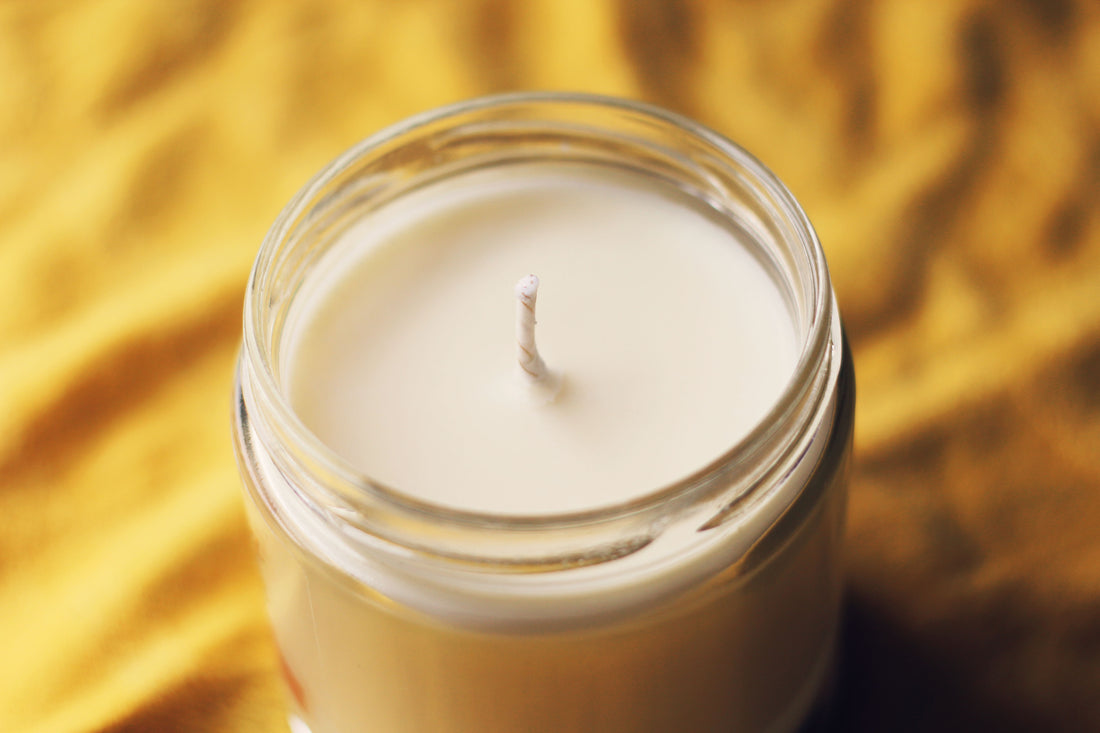Although soy wax has been grown in popularity over the past 20 years, I find many shoppers still don’t know what natural waxes are and why using natural wax is important.
So first of all, what’s so bad about paraffin?
Paraffin continues to be the most widely used wax for candles globally. This is because paraffin is readily available, easy to work with, and can be used in a variety of candle forms. Also, at the time soy wax was introduced into the market, paraffin was far less expensive than soy. This has changed over the years as less paraffin is being produced, raising paraffin prices, and the improvements and increased demand for soy wax have stabilized soy wax prices. Both waxes are now comparable in cost.
But did you know that paraffin is actually a by-product of the petroleum refining process. Because it is refined from crude oil, paraffin retains hydrocarbons from the petroleum which are released back into the air when the wax is burned, along with other toxic chemicals. Paraffin users are well familiar with the black soot residue on jars, and while it is understood to be just how it is, you should also consider how much of that black soot was not caught on the jar and released into the air instead. Excessive use of paraffin wax candles has been linked to lung cancer and other respiratory issues. You can click here to read more about a study conducted by South Carolina State University.
What types of Natural Wax are available?
There are 4 major natural waxes widely available today
- Beeswax – Bees “invented” natural wax. Beeswax makes wonderful candles and beeswax candles continue to be widely available and highly valued today.
- Palm wax – Palm wax has been popular for many years because it can produce pillar candles as hard as paraffin and has a very unique mottled look on the finished candles.
- Soy Wax – Soy wax has steadily grown in popularity since the 90’s. Soy wax is made by extracting the oil from soy beans. The oil is then hydrogenating into a white wax substance and the unused portions get returned to the farm as animal feed. Original “soy candles” on the market were really a small amount of soy mixed with paraffin but today all-natural, paraffin free soy candles are widely available and should be clearly labeled as such.
- Coconut Wax – Coconut wax is currently trending as the exciting new wax on the market. Coconut wax is produced similarly to soy wax but made from coconut oil.
(Bayberry and tallow are also considered to be natural waxes but as they are not used much these days, I won’t go into their pros and cons.)
So Which type of wax is best? This answer is very subjective and depends on what your goals are for using a candle.
- Beeswax – Beeswax does not take or re-release scent very well and is extremely expensive compared to other natural waxes. It is the best option for unscented taper candles; however, beeswax is not vegan and even many non-vegans would prefer not to use beeswax due to the struggles bee colonies are facing globally from commercial operations exposing bees to chemicals and pesticides to obtain their honey and wax on a large-scale. If you have access to a responsible, local beekeeper with honey or wax to sell, that’s great! But for purposes of large-scale wax production, that beeswax typically comes from the kinds of companies we avoid for our honey purchases so we would not want to support by buying wax from them. Click here to learn more about sustainable beekeeping from our favorite bee expert.
- Palm Wax – Palm wax is the best natural option for scented pillar candles, due to its hardness without additives; however, palm wax, like palm oil, is a major culprit for mass deforestation in rain forest regions like Borneo. Orangutans have become the “poster animals” for this crisis due to their habitats being rapidly destroyed to meet the global demand for palm products. Many eco-conscious suppliers will not even carry palm wax anymore because they cannot find a truly sustainable palm wax supplier.
- Soy Wax – The majority of all the soy wax in the world is produced from soybeans grown in America and is a highly sustainable, renewable resource that supports the American farming community. This is why we choose to use soy wax in all of our candles.
- Coconut Wax – Coconut wax is incredibly soft even compared to soy wax and is not practical as a candle wax in its pure form yet. Manufacturers are working to create a harder pure coconut wax, but currently candles on the market labeled as “Coconut Wax Candles” are typically made of soy, paraffin, or palm wax mixed with the coconut wax, and any pure coconut wax sold is recommended to be blended with a harder wax before using as a candle. Coconut wax blends are anywhere from 20-75% more expensive depending on the blend, and true, pure coconut wax is 3-4 x the price of soy wax.
We like soy wax because it is grown in America and supports the American farmer and the economy in a way the other waxes do not. It is not a perfect wax and we would never suggest it is the only option to use, but for our goals as a candle company and the type of candles we want to offer our customers, soy wax fits the bill!

